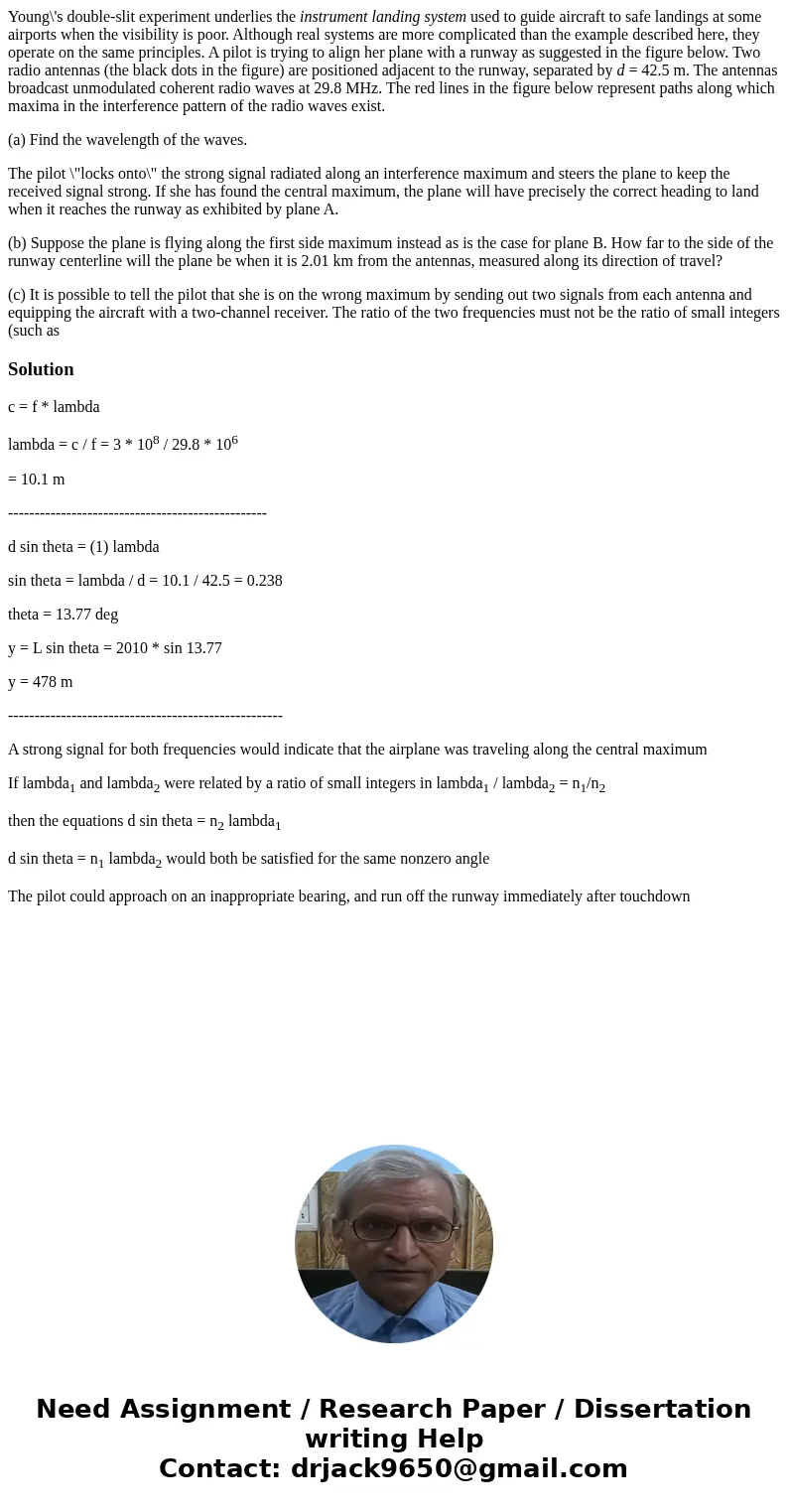Youngs doubleslit experiment underlies the instrument landin
Young\'s double-slit experiment underlies the instrument landing system used to guide aircraft to safe landings at some airports when the visibility is poor. Although real systems are more complicated than the example described here, they operate on the same principles. A pilot is trying to align her plane with a runway as suggested in the figure below. Two radio antennas (the black dots in the figure) are positioned adjacent to the runway, separated by d = 42.5 m. The antennas broadcast unmodulated coherent radio waves at 29.8 MHz. The red lines in the figure below represent paths along which maxima in the interference pattern of the radio waves exist.
(a) Find the wavelength of the waves.
The pilot \"locks onto\" the strong signal radiated along an interference maximum and steers the plane to keep the received signal strong. If she has found the central maximum, the plane will have precisely the correct heading to land when it reaches the runway as exhibited by plane A.
(b) Suppose the plane is flying along the first side maximum instead as is the case for plane B. How far to the side of the runway centerline will the plane be when it is 2.01 km from the antennas, measured along its direction of travel?
(c) It is possible to tell the pilot that she is on the wrong maximum by sending out two signals from each antenna and equipping the aircraft with a two-channel receiver. The ratio of the two frequencies must not be the ratio of small integers (such as
Solution
c = f * lambda
lambda = c / f = 3 * 108 / 29.8 * 106
= 10.1 m
-------------------------------------------------
d sin theta = (1) lambda
sin theta = lambda / d = 10.1 / 42.5 = 0.238
theta = 13.77 deg
y = L sin theta = 2010 * sin 13.77
y = 478 m
----------------------------------------------------
A strong signal for both frequencies would indicate that the airplane was traveling along the central maximum
If lambda1 and lambda2 were related by a ratio of small integers in lambda1 / lambda2 = n1/n2
then the equations d sin theta = n2 lambda1
d sin theta = n1 lambda2 would both be satisfied for the same nonzero angle
The pilot could approach on an inappropriate bearing, and run off the runway immediately after touchdown

 Homework Sourse
Homework Sourse